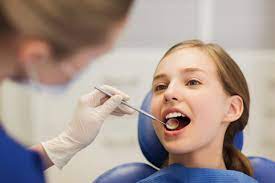Building Better Smiles: Easmer Monomers and Oligomers in Modern Dentistry
Release time:
2025-10-08
When you sit in a dentist’s chair, what you see are the familiar lights, tools, and maybe a little anxiety. What you don’t see are the cutting-edge chemistry and material science at work behind every filling, adhesive, and dental resin. The science of dental materials has advanced dramatically in the past decades, and much of this progress comes from (meth)acrylate monomers and oligomers. These reactive building blocks form the backbone of restorative composites, adhesives, and protective coatings that are essential to modern dental care.
As a supplier of (meth)acrylate materials, Eastomat has been dedicated to the research, development, and production of dental products for many years. Below, we will introduce some of the Easmer monomers and oligomers provided by us that are suitable for dental applications.
Spotlight on Key Dental Monomers and Oligomers
(1) Easmer BisGMA (Bisphenol A-glycidyl methacrylate)
Structure/Type: Aromatic dimethacrylate with a rigid bisphenol backbone.
Key properties:
Very high viscosity and rigidity.
Excellent mechanical strength and chemical resistance.
Very low shrinkage but poor flowability.
Typical dental scenario:
Easmer BisGMA is the cornerstone monomer in almost every dental composite resin. When a dentist places a light-cured filling, the main body of the material — the resin matrix — is largely Easmer BisGMA–based. It provides structural hardness and helps the restoration resist chewing forces and wear.
Because of its high viscosity, Bis-GMA is often blended with diluent monomers like Easmer TEGDMA to make it workable. In bonding agents and resin cements, Easmer BisGMA ensures the cured layer remains strong and dimensionally stable.
Example: The solid, glossy surface of a cured composite filling owes much of its rigidity to Easmer BisGMA’s aromatic structure.
(2) Easmer UA8200M (Urethane dimethacrylate)
Structure/Type: Aliphatic urethane-linked dimethacrylate.
Key properties:
Lower viscosity than Easmer BisGMA.
Excellent flexibility and impact resistance.
Reduced polymerization shrinkage and water absorption.
Typical dental scenario:
When used in bulk-fill composites or universal adhesives, Easmer UA8200M improves handling and toughness. It absorbs stress during curing and mastication, helping prevent cracks and debonding at the tooth interface.
In clinical practice, dentists prefer Easmer UA8200M-based systems for restorations in areas subject to high occlusal loads, such as molars. Its low water sorption also enhances color stability and longevity — critical for esthetic restorations.
(3) Easmer TEGDMA (Triethylene glycol dimethacrylate)
Structure/Type: Low-viscosity aliphatic dimethacrylate.
Key properties:
Acts as a reactive diluent to lower viscosity.
Increases crosslinking density and mechanical strength.
Can cause higher polymerization shrinkage and residual monomer if overused.
Typical dental scenario:
In composite resins and bonding agents, Easmer TEGDMA is the flow enhancer. It allows dense filler loading and ensures the material adapts smoothly into cavity walls and narrow spaces.
However, formulating too much Easmer TEGDMA can lead to excess shrinkage stress, which is why it’s always balanced with high-molecular-weight components like Easmer BisGMA or Easmer UA8200M.
Example: When a dentist applies flowable composite to seal small fissures,Easmer TEGDMA helps the resin flow evenly and penetrate micro-irregularities before curing.
(4) Easmer HEMA (2-Hydroxyethyl methacrylate)
Structure/Type: Hydrophilic monomethacrylate.
Key properties:
Excellent wetting and penetration of moist dentin.
Facilitates bonding in humid oral conditions.
Can absorb water and affect long-term stability.
Typical dental scenario:
Easmer HEMA is a must-have in adhesive primers and bonding agents. During cavity preparation, dentin is often moist — and hydrophobic resins struggle to wet it. HEMA acts as a bridge, improving penetration and ensuring strong micromechanical interlocking.
You’ll also find Easmer HEMA in resin-modified glass ionomer cements, where it helps merge ionic and polymeric phases for durable adhesion.
Example: The thin bonding layer beneath a composite restoration often owes its perfect dentin seal to Easmer HEMA’s hydrophilic chemistry.
(5) Easmer 2EO-BPADMA(Ethoxylated Bisphenol A dimethacrylate)
Structure/Type: Ethoxylated derivative of Bis-GMA.
Key properties:
Lower viscosity and lower water uptake than Easmer BisGMA.
Comparable strength but slightly more flexible.
Excellent optical clarity and color stability.
Typical dental scenario:
2EO-BPADMA is widely used in esthetic restorative systems, where translucency and color stability matter most — for example, anterior tooth fillings and veneers.
Its reduced viscosity simplifies handling for dentists and lab technicians, while its hydrophobicity enhances aging resistance. Many modern composite systems replace part of Easmer BisGMA with Easmer 2EO-BPADMA to achieve better polishability and less yellowing over time.
(6) Easmer PEG(200-400)DMA (Polyethylene glycol dimethacrylate)
Structure/Type: Flexible aliphatic dimethacrylates.
Key properties:
Improve flexibility and reduce brittleness.
Allow control over crosslink density and elasticity.
Typical dental scenario:
In soft denture liners and temporary restorative materials, flexibility is essential. Easmer PEGDMA are used to tune softness and resilience, providing comfort and cushioning for removable prosthetics.
They also appear in resin cements and base materials where moderate flexibility helps absorb stress between dissimilar materials, such as tooth enamel and ceramic crowns.
Example: A soft reline material that remains comfortable over months owes its elasticity to Easmer PEGDMA-based polymer networks.
Conclusion
The world of dental materials is far more sophisticated than it appears from the patient’s perspective. Behind every successful filling or restoration lies a carefully engineered resin system built on methacrylate chemistry. As innovation continues, we can expect even smarter, stronger, and more biocompatible materials—ensuring that the next time you smile, you’re supported not just by your teeth, but by decades of chemical ingenuity from Eastomat.
dental materials,Easmer,Methacrylate,BISGMA,UDMA,PEGDMA
Previous Page
Latest News
Get a Free Consultancy
NANTONG EASTO MATERIALS TECHNOLOGY CO.,LTD.

No.118,Zhujiang Rd.,Juegang St.,Rudong County,
Nantong City,Jiangsu Province,226400,China




 2025-10-23
2025-10-23







